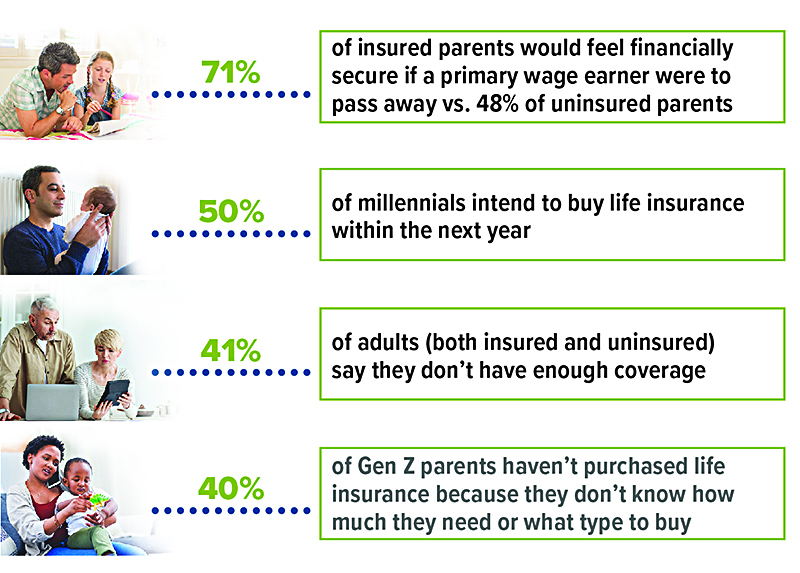We inform, help and support the creative community
Policies differ widely. Term life insurance pays out a death benefit if you die within the specified period, often 20 or 30 years. Because it only pays for untimely deaths, it is less expensive. Permanent policies, whole or universal, cost more than term insurance because they cover the insured during their entire life (as long as premiums are paid) and include a savings component.
Whole life offers a guaranteed cash value and fixed premiums. A universal policy allows you to change the death benefit and to increase, decrease, or stop premiums (provided you maintain a sufficient cash balance to cover the insurance cost). You can take a loan or a withdrawal from the cash portion of both permanent policies. Beneficiaries will not receive money left in the cash portion of either policy when you die

People overestimate costs. Most people think life insurance costs much more than it does. Particularly if you purchase a policy when you’re young, term insurance can be surprisingly affordable. On average, a 30-year-old male can get a $500,000, 20-year term life policy for around $222 a year. Even if he waits until turning 50, the average policy is only $821 a year. Costs are even lower for women.
Facts
You may qualify with health conditions. Many people assume they can’t get life insurance if they have a pre-existing condition. This is often not the case, although extra screening might be required, and you may pay higher premiums. However, providing proof that a condition – such as high blood pressure, high cholesterol, or anxiety – is being managed effectively can improve your risk assessment.
Riders can add options. Riders are additional benefits that can be added to a basic policy. Some of the more common cover long-term care costs, let an insured use death benefits during a terminal illness, allow the insured to increase coverage without additional medical testing, or waive premiums if disability causes the insured to lose their income.

Please contact our office if you need help evaluating how much life insurance you need or determining whether your current coverage is adequate. We can handle your insurance needs at our office, work with your existing insurance agent, or recommend an agent to work with you.

Understanding Life Insurance
Your most valuable asset may be your ability to earn an income. Over the course of your lifetime, you could earn several million dollars — money that helps support you and your family. If something happened to you, how would your family replace your lost income? Life insurance can help replace your income when needed at your death. However, with the wide variety of policies available, it’s important that you understand some of the basic types of life insurance coverage.
Term Life Insurance
With a term policy, you get “pure” life insurance coverage. Term insurance provides a death benefit for a specific period of time. If you die during the coverage period, your beneficiary (the person you named to collect the insurance proceeds) receives the death benefit (the face amount of the policy). If you live past the term period, your coverage ends, and you may get nothing back. Term insurance is available for periods ranging from one year to 30 years or more. You may be able to renew the policy for a new term without regard to your health, but at a higher premium. As you get older, the chance that you will die increases. For this reason, premiums generally increase as you get older. However, some term life insurance can be purchased for a fixed amount of death benefit, at a level premium, for a specified number of years. Most term insurance also has a conversion feature that allows you to switch your coverage to some type of permanent insurance without answering health questions.
Whole Life Insurance
Whole life insurance is a type of permanent insurance or cash value insurance. Unlike term insurance, which provides coverage for a particular period of time, permanent insurance provides coverage for your entire life, as long as you pay the premiums. When you make premium payments, you pay more than is needed to pay for the current costs of insurance coverage and expenses. The excess payment is credited to a cash value account. This cash value account allows the insurance company to charge a level premium and to provide a death benefit and cash value throughout the life of the policy. The cash value grows tax deferred and can be directly accessed through a partial or complete surrender of the policy, or through policy loans. It is important to note, however, that a policy loan or partial surrender will reduce the policy’s death benefit, and a complete surrender will terminate coverage altogether.
Universal Life Insurance
Universal life is another type of permanent life insurance with a death benefit and a cash value account. Unlike traditional whole life, universal life insurance allows you flexibility in making premium payments. Universal life insurance policy premiums may be adjusted upward or downward within policy guidelines. Reducing or increasing premiums will impact the growth of the cash value component and possibly the death benefit. Some universal life policies also allow you to choose a level or increasing death benefit. Be aware, though, that if you want to raise the amount of coverage, you’ll need to go through the insurability process again, probably including a new medical exam, and your premiums will increase.
Strong Interest in Life Insurance

Source: 2023 Insurance Barometer Study, Life Happens and LIMRA
The cost and availability of life insurance depend on factors such as age, health, and the type and amount of insurance purchased. There are expenses associated with the purchase of life insurance. Policies commonly have mortality and expense charges. Any guarantees are subject to the financial strength and claims-paying ability of the insurance issuer. Loans and withdrawals will reduce the policy’s cash value and death benefit, could increase the chance that the policy will lapse, and might result in a tax liability if the policy terminates before the death of the insured. Additional out-of-pocket payments may be needed if actual dividends or investment returns decrease, if you withdraw policy cash values, if you take out a loan, or if current charges increase.
This content has been reviewed by FINRA.
